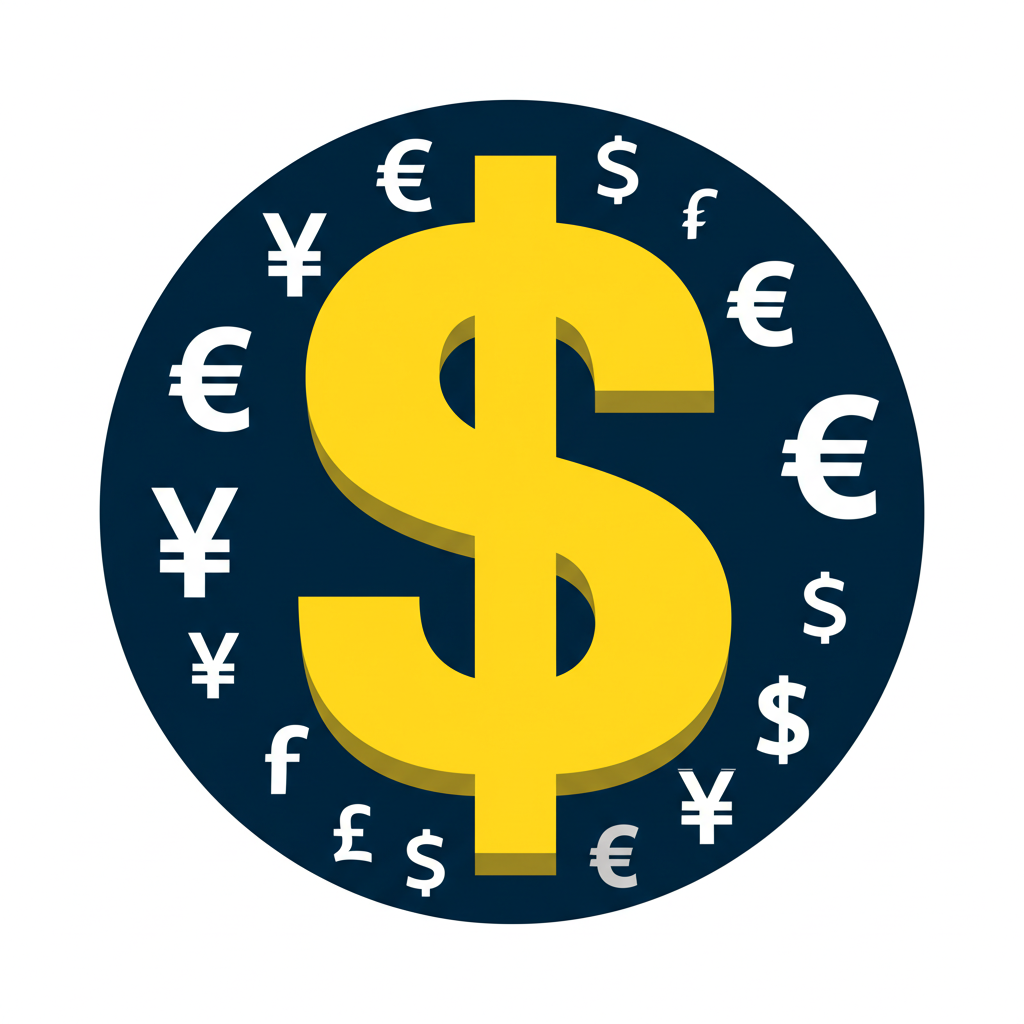Introduction: The Global Dominance of the US Dollar

In the vast and complex arena of international finance, one currency consistently emerges as the cornerstone of global economic activity—the US Dollar. More than just a medium of exchange for Americans, the USD functions as the backbone of cross-border commerce, investment, and monetary policy coordination worldwide. The foreign exchange market, commonly referred to as Forex, stands as the largest and most liquid financial marketplace on Earth, processing an average of over $7.5 trillion in transactions every single day. Within this high-speed, around-the-clock ecosystem, understanding which currency holds the reins—and why—is essential for anyone seeking to grasp how nations interact economically. This article unpacks the structural, historical, and strategic reasons behind the dollar’s unrivaled position, examines other influential currencies, and considers what the future might hold for the global monetary order.
What is the Foreign Exchange (Forex) Market?

The foreign exchange market is not a physical location but a vast, decentralized network where currencies are bought, sold, and exchanged. Operating 24 hours a day, five days a week, it connects financial hubs across time zones—from Tokyo and Sydney to London and New York—ensuring that currency conversion never stops. Unlike stock exchanges that function through centralized platforms, Forex trades occur over-the-counter (OTC), meaning transactions are conducted directly between institutions, banks, and traders via electronic networks.
At its core, the Forex market exists to enable international economic activity. When a German company imports machinery from Japan, it must pay in Japanese yen; when a Canadian tourist visits Thailand, they need Thai baht. These conversions happen seamlessly thanks to the Forex market. Beyond practical needs, the market also serves speculative and risk-management purposes. Investors may trade currencies to profit from fluctuating exchange rates, while multinational corporations hedge against potential losses caused by currency volatility.
Daily trading volumes regularly surpass $7.5 trillion, dwarfing the combined turnover of all major stock exchanges. Key players include central banks, which intervene to stabilize their domestic currencies or manage reserves; commercial and investment banks, which facilitate large-scale trades; hedge funds and asset managers, who seek returns through macroeconomic bets; and retail traders, who participate through online brokers. This diverse ecosystem ensures constant liquidity and price discovery, making Forex not only massive in scale but also highly responsive to global economic shifts.
The US Dollar: The Unchallenged Leader of Global Currency Trade

No currency comes close to matching the US Dollar’s footprint in global foreign exchange trading. According to the Bank for International Settlements (BIS) Triennial Central Bank Survey of 2022, the USD was involved in approximately 88% of all Forex transactions. This means that nearly nine out of every ten currency trades somewhere involve the dollar—either as the base or quote currency. Such dominance isn’t accidental; it reflects decades of economic leadership, institutional credibility, and deeply embedded financial infrastructure.
The dollar’s role extends far beyond national borders. It serves as the world’s primary reserve asset, the default pricing mechanism for commodities like oil and gold, and a preferred safe-haven during times of crisis. Even when two non-US countries engage in trade, they often settle in dollars due to its reliability and ease of access. This widespread usage reinforces its liquidity, creating a self-sustaining cycle: the more people use it, the more valuable and stable it becomes.
Why the US Dollar Reigns Supreme: Key Factors Behind Its Dominance
A confluence of structural, economic, and geopolitical factors underpins the dollar’s enduring supremacy in global finance:
* **Reserve Currency Status:** Central banks around the world hold substantial portions of their foreign exchange reserves in US Dollars. As of recent data from the International Monetary Fund, more than 58% of global reserves are denominated in USD. This demand is driven by the need to back national currencies, manage exchange rate volatility, and ensure readiness for international payments. The scale of these holdings creates a permanent, underlying demand for the dollar.
* **Economic Size and Stability:** The United States maintains the largest economy globally by nominal GDP, supported by a mature legal system, transparent regulatory frameworks, and deep capital markets. Despite periodic recessions, the long-term trajectory of the US economy has been one of resilience and innovation. This consistency fosters confidence among global investors, who view the dollar as a reliable store of value.
* **Unmatched Liquidity:** US financial markets—especially the Treasury market—are the most liquid in the world. Billions of dollars’ worth of US government bonds change hands daily, allowing institutions to enter and exit positions quickly without significantly affecting prices. This depth makes the dollar ideal for large-scale transactions, reducing transaction costs and execution risk.
* **Commodity Pricing Benchmark:** A vast majority of internationally traded commodities, including crude oil, natural gas, copper, and precious metals, are priced in US Dollars. This convention, sometimes referred to as the “petrodollar system,” dates back to agreements between the US and major oil producers in the 1970s. As a result, countries importing energy must first acquire dollars, reinforcing global demand regardless of direct trade ties with the US.
* **Geopolitical Influence:** The United States plays a central role in international institutions such as the IMF, World Bank, and United Nations. Its military presence spans multiple continents, and its diplomatic reach influences global policy decisions. This geopolitical clout enhances trust in the dollar, as many nations perceive the US as capable of maintaining global stability and enforcing financial agreements.
* **Safe-Haven Appeal:** During periods of market turmoil—be it financial crises, wars, or pandemics—investors tend to move capital into US assets, particularly Treasuries and the dollar itself. This flight to safety is based on the perception that the US financial system can withstand shocks better than most others. The Swiss franc and Japanese yen also enjoy safe-haven status, but the dollar remains the default choice due to its scale and accessibility.
Beyond the USD: Other Major Currencies in the Forex Market
While the US Dollar dominates the Forex landscape, several other currencies play critical roles in global finance. These currencies are frequently traded, highly liquid, and closely watched by investors, policymakers, and analysts. Their movements often reflect broader economic trends and regional developments.
The following table outlines the most traded currencies based on the BIS 2022 survey, highlighting their share of daily turnover:
| Rank | Currency | Symbol | Percentage of Turnover (2022) |
| :— | :——————- | :—– | :—————————- |
| 1 | US Dollar | USD | 88.5% |
| 2 | Euro | EUR | 30.5% |
| 3 | Japanese Yen | JPY | 16.7% |
| 4 | British Pound | GBP | 12.8% |
| 5 | Australian Dollar | AUD | 6.9% |
| 6 | Canadian Dollar | CAD | 6.2% |
| 7 | Swiss Franc | CHF | 5.2% |
| 8 | Chinese Yuan Renminbi | CNY | 4.3% |
*Note: The sum exceeds 100% because each trade involves two currencies.*
The Euro (EUR): Europe’s Economic Powerhouse
As the official currency of 20 out of 27 European Union countries, the euro represents one of the largest integrated economic zones in the world. With a combined GDP rivaling that of the United States, the Eurozone gives the EUR substantial weight in global markets. The European Central Bank (ECB) manages monetary policy for the bloc, aiming to maintain price stability and support growth.
The euro’s strength is anchored in the economic performance of core members like Germany and France, whose industrial output and trade surpluses contribute to the currency’s stability. However, structural challenges—such as divergent fiscal policies among member states and political fragmentation—can lead to periods of uncertainty, particularly during debt crises or elections. Still, the euro remains a key alternative to the dollar in both trade invoicing and reserve holdings, especially among neighboring regions and former colonies.
The Japanese Yen (JPY): Asia’s Key Trading Currency
Japan’s status as a major exporter and creditor nation has cemented the yen’s role in global finance. The country consistently runs current account surpluses and holds vast foreign assets, contributing to the yen’s reputation for stability. Additionally, the Bank of Japan’s long-standing low-interest-rate environment has made the JPY a popular funding currency in carry trades—where investors borrow in low-yield currencies to invest in higher-yielding ones.
During times of global stress, the yen often strengthens as investors unwind risky positions and repatriate funds. This behavior underscores its safe-haven characteristics, though its impact is sometimes tempered by active intervention from Japanese authorities seeking to prevent excessive appreciation that could hurt exports.
The British Pound (GBP): A Legacy of Financial Strength
Despite the economic and political turbulence following Brexit, the British pound remains a major player in the Forex market. London continues to serve as a leading global financial center, hosting some of the world’s largest banks, asset managers, and foreign exchange desks. The Bank of England’s monetary policy decisions, UK inflation data, and employment figures are closely monitored indicators that influence GBP valuation.
The pound’s value has experienced increased volatility since the 2016 referendum, reflecting ongoing debates about trade relationships with the EU and domestic economic reform. Nevertheless, the UK’s deep capital markets and history of financial innovation ensure that sterling retains its relevance in international transactions.
Other Significant Players (AUD, CAD, CHF, CNY)
* **Australian Dollar (AUD):** Known as a “commodity dollar,” the AUD is highly sensitive to movements in metal and agricultural prices. Australia’s strong trade relationship with China—its largest export market—means that changes in Chinese demand can have immediate effects on the currency. Positive economic data from Asia often boosts the AUD, while global slowdowns tend to weaken it.
* **Canadian Dollar (CAD):** Similarly tied to resource exports, the CAD is often called a “petrocurrency” due to Canada’s status as a top oil exporter. Movements in crude oil prices, particularly West Texas Intermediate (WTI), directly impact the loonie’s value. Moreover, given that over 75% of Canada’s exports go to the United States, the health of the US economy is a major determinant of CAD performance.
* **Swiss Franc (CHF):** Switzerland’s political neutrality, strong fiscal discipline, and world-renowned banking sector make the franc a classic safe-haven currency. During global crises, investors seek refuge in CHF-denominated assets, driving up its value. However, the Swiss National Bank has historically intervened to curb excessive appreciation, fearing damage to the export-dependent economy.
* **Chinese Yuan (CNY):** Although still under a managed exchange rate regime, the yuan has made significant strides toward internationalization. China promotes the use of the renminbi in cross-border trade settlements, particularly through initiatives like the Belt and Road. The launch of the Cross-Border Interbank Payment System (CIPS) aims to reduce reliance on SWIFT and the dollar-dominated clearing system. While capital controls and limited market openness restrict its full potential, the yuan’s share in global reserves and transactions is gradually rising.
Understanding Major Currency Pairs
Currency trading in the Forex market always occurs in pairs, reflecting the relative value of one currency against another. The first currency listed is known as the base currency, while the second is the quote currency. For example, in the EUR/USD pair, the euro is the base, and the US dollar is the quote. If the exchange rate is 1.08, it means one euro buys 1.08 US dollars.
The most liquid and widely traded pairs—collectively known as the “majors”—all include the US dollar. These pairs dominate trading volume due to their tight spreads, high execution speed, and abundant market analysis.
Key major currency pairs include:
* **EUR/USD:** The most actively traded pair globally, often viewed as a barometer of economic sentiment between the Eurozone and the United States.
* **USD/JPY:** A critical pair for gauging risk appetite; rising values typically indicate confidence, while declines suggest market caution.
* **GBP/USD:** Nicknamed “Cable,” this pair reflects the economic dynamics between the UK and US, with heightened volatility often linked to Brexit developments or BoE policy shifts.
* **USD/CHF:** Sometimes seen as a proxy for risk aversion; during crises, funds may flow into the Swiss franc, pushing this pair lower.
* **AUD/USD:** Influenced heavily by commodity cycles and Chinese economic data, this pair is a favorite among traders focused on Asia-Pacific trends.
* **USD/CAD:** Often inversely correlated with oil prices, this pair is closely watched by energy traders and analysts tracking North American economic integration.
These pairs benefit from deep market participation, ensuring that even large trades can be executed efficiently. Their predictability and availability of historical data also make them ideal for algorithmic and technical trading strategies.
The Future of Global Currency Dominance: Trends and Challenges
Despite its entrenched position, the US Dollar’s dominance faces emerging pressures that could reshape the international monetary system over the coming decades. While no single currency is poised to replace the dollar in the near term, several structural shifts warrant close attention.
China’s rise as an economic superpower represents the most significant long-term challenge. Beijing has actively promoted the international use of the yuan through bilateral swap agreements, offshore renminbi centers, and digital currency diplomacy. The Digital Yuan (e-CNY), currently in pilot phases, could eventually facilitate faster, cheaper cross-border payments outside traditional dollar-based systems. If fully adopted, such technology could erode the dollar’s role in regional trade, particularly across Asia, Africa, and Latin America.
Meanwhile, discussions around de-dollarization have gained traction among certain governments seeking to reduce exposure to US financial sanctions and monetary policy spillovers. Countries like Russia, Iran, and Turkey have explored alternative settlement mechanisms using local currencies or gold. However, these efforts remain limited in scope and lack the institutional depth needed for widespread adoption.
Technological innovation is another disruptive force. Central Bank Digital Currencies (CBDCs) are being developed by over 130 countries, including the United States, where the Federal Reserve continues research into a potential digital dollar. These digital tokens could streamline international settlements, reduce reliance on correspondent banking, and enhance financial inclusion. Blockchain-based platforms and stablecoins also offer new pathways for cross-border value transfer, though regulatory hurdles remain substantial.
Multilateral efforts, such as those within BRICS+ or ASEAN, aim to increase currency diversification in trade and reserves. Yet, without a credible alternative in terms of market size, liquidity, and institutional trust, the transition away from the dollar will likely be slow and incremental.
Ultimately, the dollar’s dominance rests on a foundation of network effects: its widespread use creates inertia. Replacing it would require not just economic parity, but also confidence in rule of law, open capital markets, and macroeconomic stability—qualities that take generations to build.
Conclusion: The Enduring Role of the US Dollar
The US Dollar’s position as the most traded currency in the foreign exchange market is the result of a powerful synergy between economic strength, institutional credibility, and global infrastructure. With an 88% presence in daily Forex transactions, it remains the linchpin of international finance. Its role as a reserve currency, commodity benchmark, and safe-haven asset ensures consistent demand across diverse market conditions.
While currencies like the euro, yen, and pound remain vital components of the global system, and the Chinese yuan steadily gains ground, none currently possess the combination of scale, liquidity, and trust necessary to unseat the dollar. The Forex market, with its trillions in daily turnover, continues to rely on the greenback as the primary medium for cross-border exchange.
Looking ahead, technological innovation, geopolitical realignments, and strategic currency policies may gradually shift the balance. But any meaningful change in the global monetary hierarchy will unfold over decades, not years. For the foreseeable future, the US Dollar will remain at the heart of global trade, finance, and economic stability—connecting economies, facilitating commerce, and shaping the flow of capital across borders.
What is the primary reason the US Dollar is the most traded currency globally?
The primary reason is its status as the world’s dominant global reserve currency. Central banks and financial institutions worldwide hold significant portions of their foreign exchange reserves in USD, creating constant demand. Its perceived economic stability and deep liquidity also contribute significantly.
Which currencies consistently rank among the top 5 most traded in the world?
After the US Dollar (USD), the top 5 most traded currencies consistently include the Euro (EUR), Japanese Yen (JPY), British Pound (GBP), and the Australian Dollar (AUD).
How does the foreign exchange market’s daily trading volume compare to stock markets?
The foreign exchange market is significantly larger and more liquid than any stock market. Its daily trading volume often exceeds $7.5 trillion, dwarfing the trading volumes of even the largest global stock exchanges.
What role do central banks play in the trading of major currencies?
Central banks play a crucial role. They manage national currency reserves, intervene in the forex market to stabilize their own currency, implement monetary policy (such as setting interest rates), and conduct large-scale transactions for government financing or international trade.
Are there any emerging currencies challenging the dominance of traditional major currencies?
The Chinese Yuan (CNY) is the most prominent emerging currency challenging traditional major currencies. Its increasing use in international trade and finance, driven by China’s economic growth, is gradually increasing its share in global forex turnover, though it remains far behind the USD and EUR.
What are the characteristics that make a currency a “safe haven” in the forex market?
A safe-haven currency is one that investors flock to during times of global economic uncertainty or geopolitical instability. Key characteristics include:
- Strong economic stability and robust financial system.
- Low national debt and fiscal discipline.
- Political neutrality and stable governance.
- High liquidity and ease of conversion.
The US Dollar, Japanese Yen, and Swiss Franc are prime examples.
How do economic indicators in the US affect the trading value of the US Dollar?
Economic indicators such as GDP growth, inflation rates, employment data (e.g., non-farm payrolls), and interest rate decisions by the Federal Reserve significantly impact the USD’s trading value. Positive data or expectations of higher interest rates tend to strengthen the dollar, while negative data can weaken it.
Can individual investors trade the most commonly exchanged currencies, and how?
Yes, individual investors can trade the most commonly exchanged currencies through retail forex brokers. These brokers provide online platforms that allow individuals to buy and sell currency pairs, often with leverage. It’s important to understand the risks involved before engaging in forex trading.
What are “exotic” currency pairs, and why are they less traded than major pairs?
Exotic currency pairs consist of a major currency traded against the currency of a smaller, developing, or emerging economy (e.g., USD/THB – US Dollar vs. Thai Baht). They are less traded than major pairs due to:
- Lower liquidity, leading to wider bid-ask spreads.
- Higher volatility.
- Less available information and deeper analysis.
- Potentially higher transaction costs.
What impact do geopolitical events have on the most traded currencies?
Geopolitical events can have a significant and immediate impact on the most traded currencies. During periods of global tension, political instability, or major conflicts, investors often seek the safety of traditional safe-haven currencies like the USD, JPY, or CHF, causing their values to rise. Conversely, currencies of regions directly affected by instability may weaken.

留言